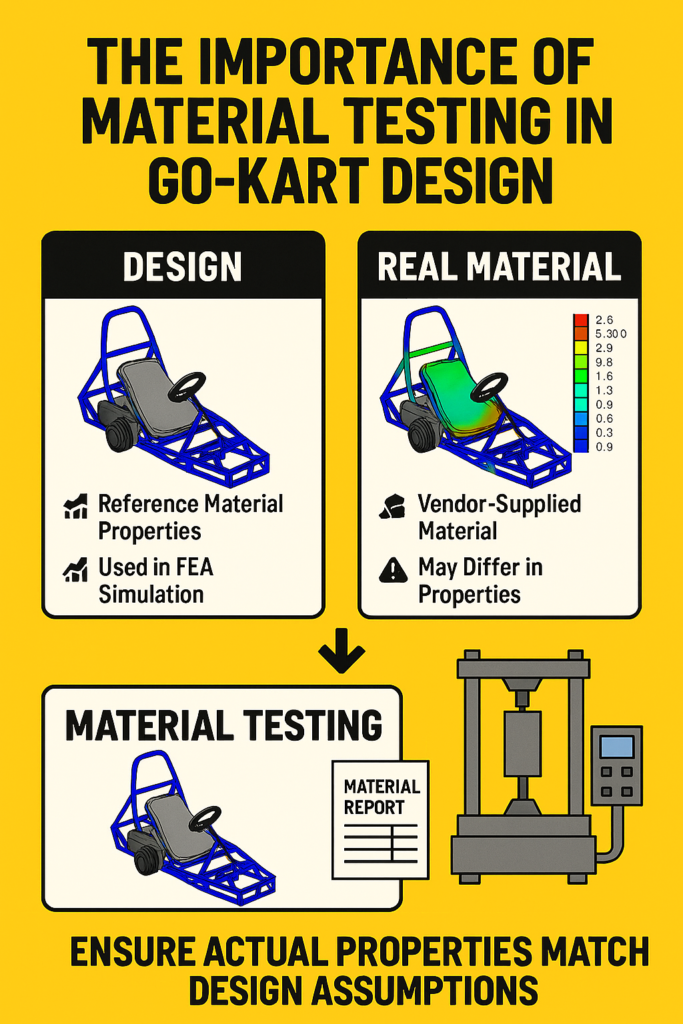Why Material Testing Can Make or Break Your Go-Kart at a Racing Event

The Real-World Scenario
Imagine this:
Your student motorsports team has worked for months designing a high-performance go-kart chassis in SolidWorks. You’ve run Finite Element Analysis (FEA) in ANSYS, carefully selecting materials from the design data book — perfect tensile strength, ideal carbon percentage, and just the right yield point.
Race day arrives at the Edgeline Go-Kart Championship. The technical inspection team — experienced engineers and judges — asks for your Material Report for every component you’ve manufactured or purchased.
They’re not just ticking boxes. They want proof:
What material is your chassis made of?
What’s the carbon content in your steel?
Does the actual yield strength match your design assumptions?
And here’s the twist — the vendor-supplied material isn’t exactly what you specified. The chemical composition is slightly off. The tensile strength is lower. Suddenly, your FEA results no longer match reality.
Why This Matters
When the material properties in real life differ from your design model, the entire stress–strain behavior of your vehicle changes. That means:
Lower strength → Higher risk of deformation or failure under load
Different stiffness → Altered handling and ride characteristics
Unexpected fatigue → Reduced lifespan of components
In motorsports, these differences can be the line between finishing the race and failing technical inspection — or worse, a structural failure on track.
The Role of Material Testing
Material testing bridges the gap between design assumptions and real-world performance. Common tests include:

Understanding the Material Report
A Material Test Certificate (MTC) or Mill Test Report (MTR) typically includes:
Material grade & standard (e.g., AISI 4130, IS 2062)
Heat number (traceability to production batch)
Chemical composition (% of C, Mn, Si, Cr, etc.)
Mechanical properties (yield strength, tensile strength, elongation)
Test methods & standards followed (ASTM, ISO, IS codes)
Tip for Students: Always cross-check these values with the ones you used in your CAD/FEA model. If they differ, update your simulation to reflect reality.
Best Practices for Student Teams
Specify Materials Clearly – Include grade, standard, and required properties in your purchase order.
Test Incoming Materials – Use a local lab to verify vendor claims before fabrication.
Maintain Traceability – Keep MTCs for every batch of material used.
Update Your Analysis – If test results differ, re-run your FEA with actual properties.
Train Your Team – Make sure every member understands how to read and interpret a material report.
The Takeaway
In motorsports engineering, design is only half the battle. The other half is ensuring that the materials you use in the real world match the properties you assumed in your simulations.
By mastering material testing and report interpretation, you not only pass technical inspection with confidence — you also build safer, faster, and more reliable race machines.
Pro Tip: In our Complete Guide of Design & Analysis of Go-Kart Chassis course, we cover not just CAD and FEA, but also how to integrate real-world material data into your design workflow — so your kart performs exactly as engineered.
